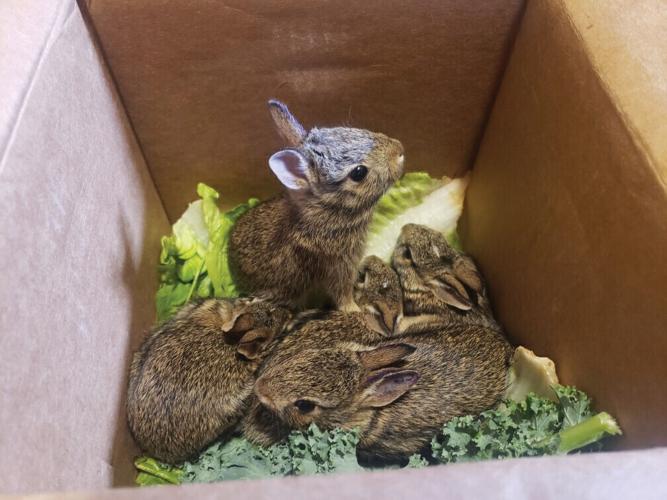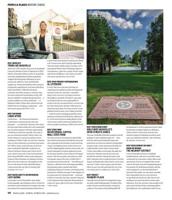
Despite the continued population growth of Nashville and the urbanization of its surrounding areas, we still share our space with wildlife. Who can forget the famed coyote that was found in a bathroom at the Music City Center back in 2019, ultimately becoming the inspiration for Nashville SC’s mascot Tempo? Or the tens of thousands of purple martins that dropped so much bird poop downtown that the Nashville Symphony Center removed trees from its plaza? That’s not to mention all the animals in parks and nature centers, plus those that show up in our backyards and sometimes even in our houses.
“We grow up learning about all these really cool faraway animals like zebras and chimpanzees and elephants, and there ends up being a big disconnect,” says Debbie Sykes, director of the Nashville Wildlife Conservation Center. “You can really find wildlife just right outside your backyard.”
The center is one of several organizations educating folks on and advocating for wildlife throughout the state. The nonprofit also serves as a wildlife hospital specializing in turtles. Organizations like Walden’s Puddle and Ziggy’s Tree also care for wild animals in need. Their websites educate people on what to do if they see animals such as reptiles, squirrels, possums or rabbits that may be in need of assistance. Some incidents may require observing an animal from afar to assess the situation; others might require more immediate assistance from a permitted wildlife rehabilitator. Caring for injured or seemingly deserted wildlife does not mean removing animals from their habitat and trying to nurse them back to health on your own. In some cases that can be dangerous to both humans and wildlife — particularly with animals that can carry rabies, like bats, raccoons, skunks and foxes.
“The best thing you can do for these animals is just leave them alone,” says Sykes. “The only time you really need to interfere tends to be if you see them acting sick.”
Sykes also encourages folks to “coexist” with wildlife by making small changes that can prevent unnecessary injuries for animals and unwanted interactions for humans. In our yards, this includes skipping mowing if and when possible and checking for animals beforehand. Planting native pollinator plants can also encourage healthy ecosystems, provide shelter for some animals and attract bugs that feed others. Sykes also recommends avoiding pesticides and herbicides that can have hazardous and reverberating effects on entire food chains. Those who use bird feeders should clean them regularly to prevent the spread of avian diseases. Check trees for nests before trimming branches. Sykes keeps her cat indoors to prevent wildlife attacks, as cats pose a threat to other animals.

Folks can also manage their houses in a way that supports wildlife without attracting animals inside. Checking for and sealing points of entry can prevent animals from entering, and now is the perfect time to do that — it’s currently baby raccoon season, and mothers are looking for safe places to shelter their offspring. If creatures do get in, Skyes suggests “evicting” them by creating a one-way door that allows them to exit and not re-enter. The Humane Society recommends “gently harassing the animals so they’ll move to an alternative location,” such as placing vinegar-soaked rags nearby or blaring music. These techniques create unwelcoming conditions that animals are likely to move away from. Keep in mind that mothers might have babies nearby, so if you call on professionals to trap and relocate, they might address only one animal and not the others — and the Humane Society doesn’t recommend this practice.
Windows are important too. The American Bird Conservancy estimates that as many as a billion birds die every year from hitting windows — nearly half of these are residential windows. Reflective windows can confuse birds and cause them to fly into the glass or even fight their own reflections, which can lead to brain damage. Additionally, the light that passes through them at night can confuse migratory birds and throw them off their paths. In the evenings, folks can turn off their lights or shut the blinds. In the daytime, anything to break up reflections can help. Investing in bird-safe glass is one option, but you can also buy anti-collision decal stickers, mark your windows with temporary paint or soap, or hang ribbons or strings. There are plenty of websites that provide helpful suggestions and links. Organizations like Bird Safe Nashville are working with the city to make it more bird-friendly. They’ve engaged homeowners and commercial businesses to become “lights out” partners, helped facilitate the Lights Out Nashville Resolution signed by Mayor John Cooper and partnered with the city and other organizations to help Nashville apply to join the U.S. Fish and Wildlife Service’s Urban Bird Treaty Program.
“Every action we take either takes away support or provides support for wildlife,” says Kim Bailey of Bird Safe Nashville. “When you think about it, that’s impactful. Like ‘Wow, my choices matter.’”
Exploring environmental activism, water quality, living alongside urban wildlife and more







